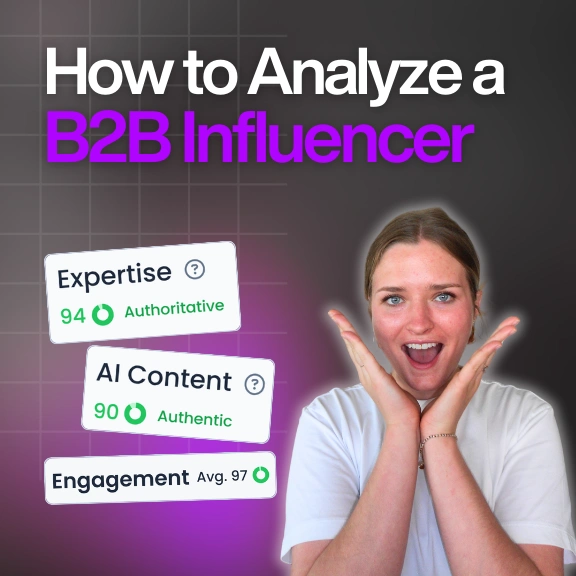Encontre
Faça os movimentos certos para identificar os melhores criadores para sua marca
Envolva-se
Faça campanhas, gerencie criadores e acompanhe os resultados que se relacionam com você
Blog e artigos
Seu recurso definitivo para a economia do criador
Metodologia e classificações
Sobre o Favikon, classificações, ferramentas e muito mais.
Percepções
A receita por trás dos rankings virais e cobiçados da Favikon.
Ferramentas gratuitas para potencializar seus fluxos de trabalho de marketing de influenciadores.
Veja as histórias de sucesso dos usuários do Favikon.
Tenha acesso a todos os rankings da Favikon.
Torne-se um parceiro
Torne-se um afiliado
Sobre a equipe por trás do Favikon
O lugar para conversar economia do criador, juntos


Classificações em destaque

Here is the Top 50 Rising Video Creators on LinkedIn. Video is quickly becoming the platform’s most powerful format, with creators gaining more reach and engagement than ever. As Gen Z grows its presence and tools like BrandLink and Thought Leader Ads support content creation, LinkedIn is doubling down on video. This ranking, made in partnership with OpusClip, celebrates the creators leading this shift and aims to inspire anyone ready to start sharing through video.

Here is the Top 50 Rising Video Creators on LinkedIn. Video is quickly becoming the platform’s most powerful format, with creators gaining more reach and engagement than ever. As Gen Z grows its presence and tools like BrandLink and Thought Leader Ads support content creation, LinkedIn is doubling down on video. This ranking, made in partnership with OpusClip, celebrates the creators leading this shift and aims to inspire anyone ready to start sharing through video.
Como avaliar a qualidade do público de um influenciador
Um grande público nem sempre significa influência real. Aprenda a identificar sinais de alerta, avaliar o engajamento e encontrar influenciadores com seguidores genuínos e de alta qualidade que se alinham à sua marca.
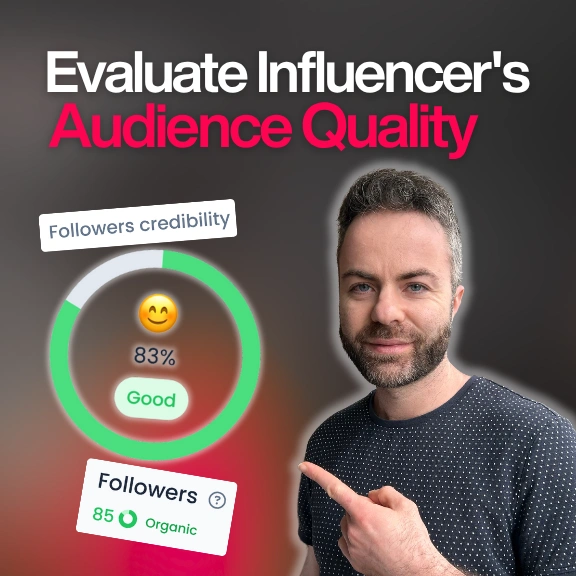
.png)

Josie Renna is a content strategy expert with a passion for helping creators navigate the ever-evolving digital landscape. Specializing in effective content creation techniques and platform-specific strategies, Josie provides insights to empower creators and brands to thrive online. With a deep understanding of algorithm dynamics and audience engagement, Josie shares actionable tips for optimizing content performance across various platforms.
Check Brand DealsComo avaliar a qualidade do público de um influenciador
Nos dias de hoje saturado cenário de marketing de influenciadores, A contagem de seguidores por si só não determina mais o sucesso da campanha. Marcas inteligentes estão mudando seu foco de métricas de vaidade para a qualidade do público, e por um bom motivo. De acordo com dados recentes do setor, campanhas com audiências de alta qualidade geram ROI três vezes melhor do que aqueles focados exclusivamente em alcançar.
Mas como você se separa comunidades autênticas e engajadas de contagens infladas de seguidores? Este guia abrangente o guiará pelas etapas essenciais para avaliar um qualidade do público do influenciador, garantindo que seu orçamento de marketing ofereça o máximo impacto.
Confira este fluxo de guia para ver como ele funciona:
Entendendo a qualidade versus a quantidade do público
O indústria de marketing de influenciadores amadureceu significativamente nos últimos anos. Como Neil Patel, especialista em marketing digital, observa: “Atualmente, as marcas mais bem-sucedidas priorizam o alinhamento e o engajamento do público em vez da contagem de seguidores. UM microinfluenciador com 10.000 seguidores altamente engajados muitas vezes supera um macro-influenciador com 1 milhão de seguidores passivos.“
Essa mudança reflete uma compreensão mais ampla de que públicos de qualidade geram melhores resultados comerciais. Públicos de alta qualidade normalmente exibem:
- Forte alinhamento demográfico com seu mercado-alvo
- Padrões de engajamento consistentes
- Interações e conversas autênticas
- Relevância geográfica para sua empresa
- Poder de compra e intenção
Analisando dados demográficos do público
Distribuição geográfica
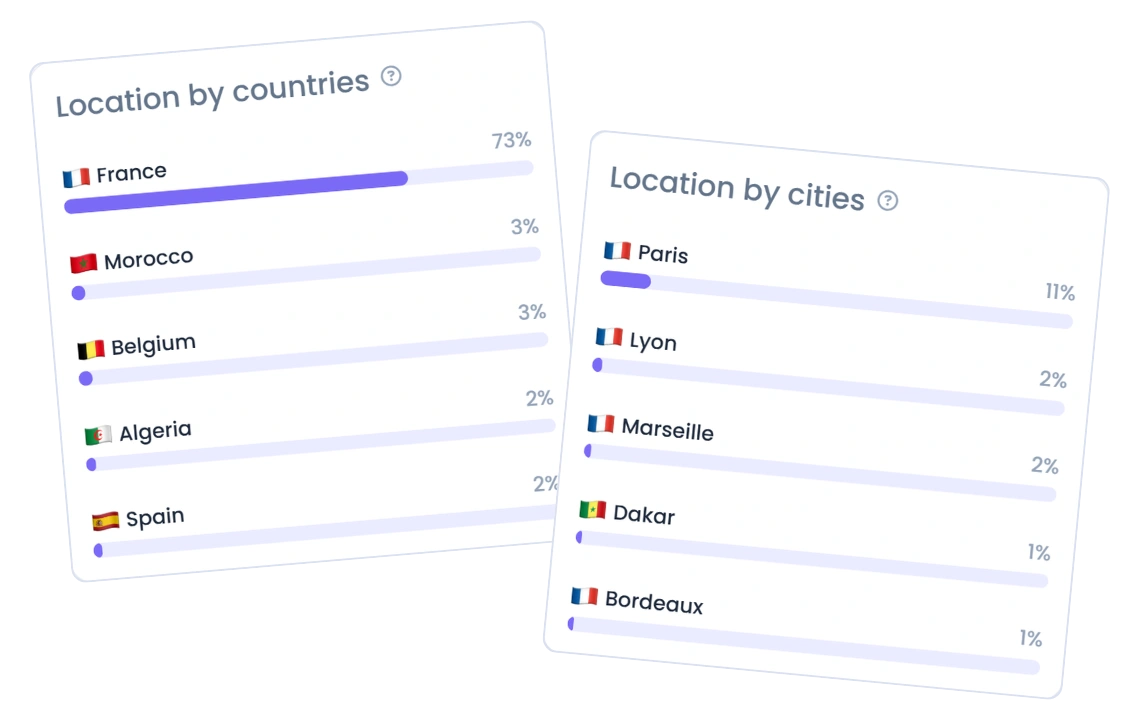
Comece examinando onde um os seguidores do influenciador estão localizados. Ferramentas como Informações do Instagram e Análise do YouTube forneça detalhamentos geográficos. Procure o alinhamento entre os influenciadores localização do público e seus mercados-alvo.
Por exemplo, se você está lançando um produto no mercado dos EUA, um influenciador cujo A audiência é de 80% baseada no sudeste da Ásia e pode não entregar os resultados você está procurando, independentemente de suas taxas de engajamento.
Dados demográficos de idade e gênero
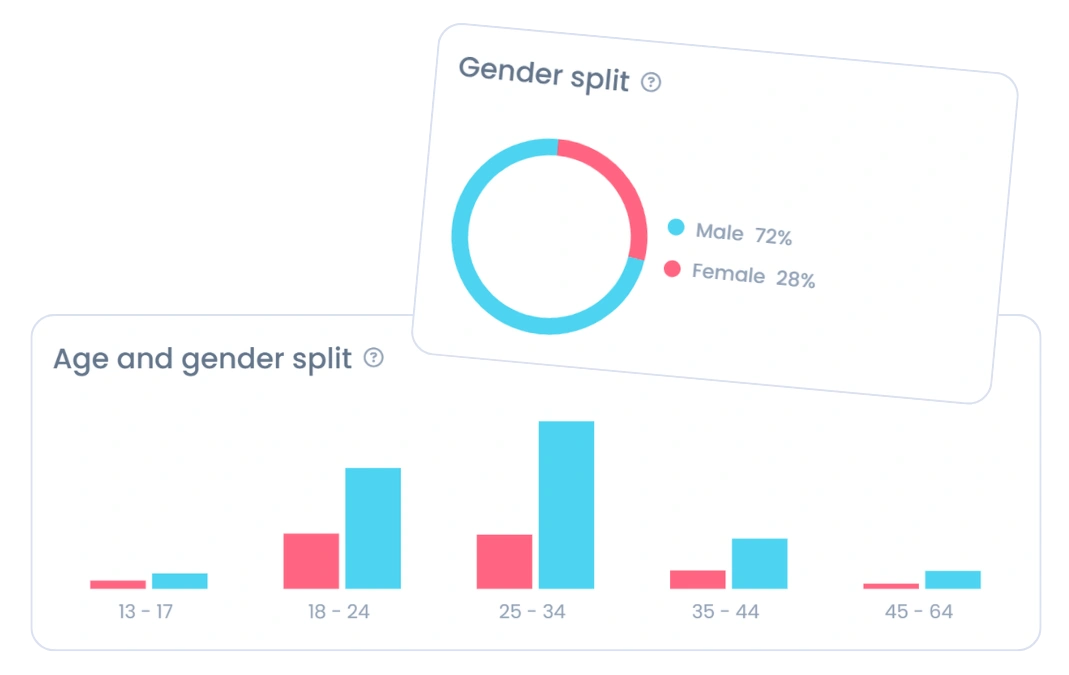
Entendendo o distribuição por idade e sexo do público de um influenciador é crucial para o alinhamento da marca. De acordo com a pesquisa do Sprout Social, campanhas com forte alinhamento demográfico, veja Taxas de conversão 67% maiores em comparação com campanhas desalinhadas.
Uso análise nativa da plataforma ferramentas para coletar esses dados:
- Instagram Insights para criadores do Instagram
- Análise do TikTok Pro para influenciadores do TikTok
- YouTube Analytics para criadores do YouTube
- Ferramentas de terceiros, como Favikon para uma visão abrangente análise multiplataforma
Interesses e psicografia

Além dos dados demográficos básicos, mergulhe mais fundo em interesses e comportamentos do público. Públicos de qualidade devem mostrar interesse genuíno em tópicos relacionados à sua marca ou indústria. Procure por:
- Engajamento com conteúdo semelhante às ofertas da sua marca
- Comentários que demonstrem conhecimento do produto ou intenção de compra
- Participação em conversas relevantes e tendências
- Consistência multiplataforma em interesses
Avaliação de métricas de engajamento
Calculando a taxa de engajamento real
Taxa de engajamento continua sendo um dos indicadores mais confiáveis da qualidade do público. No entanto, é importante calcular está corretamente.
A fórmula padrão da indústria é:
Taxa de engajamento = (curtidas + comentários + compartilhamentos + salvamentos) /seguidores × 100
De acordo com o relatório de referência de 2024 da Influencity, as taxas de engajamento saudáveis variam de acordo com a plataforma:
- Instagram: 1-3% para macroinfluenciadores, 3-6% para microinfluenciadores

- TikTok: 5-9% através todos os níveis de influenciadores
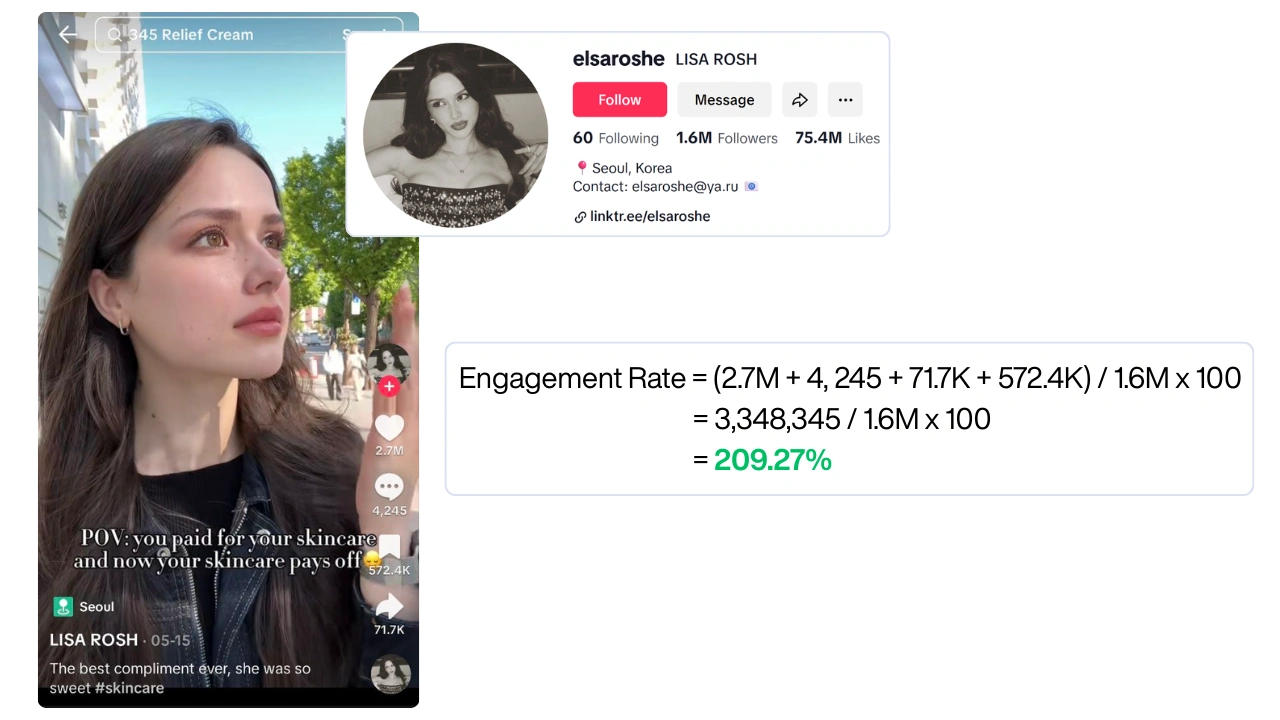
- YouTube: 2-4% para a maioria das categorias de criadores
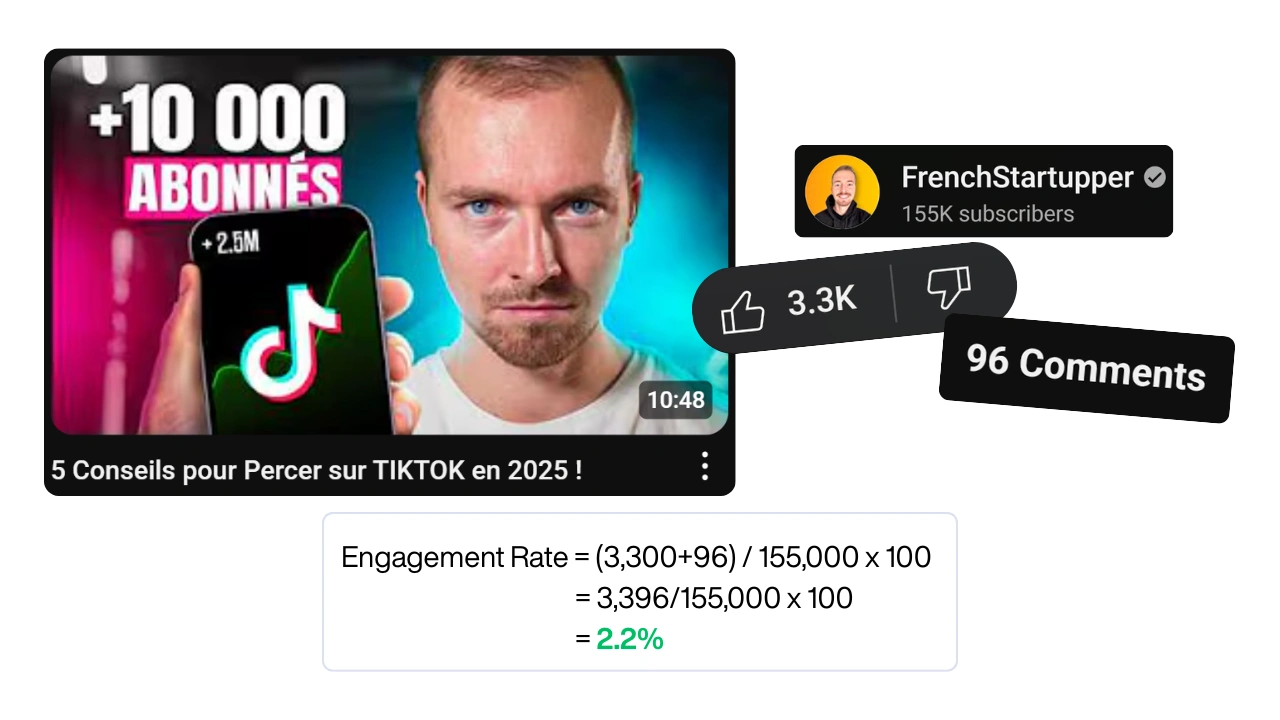
Qualidade do engajamento

Números conte apenas parte da história. Examine a qualidade do engajamento analisando:
Autenticidade do comentário: Procure comentários significativos e relevantes em vez de respostas genéricas como “Bom!” ou reações somente com emojis. Públicos de alta qualidade se envolvem conversas, fazer perguntas, e compartilhe experiências pessoais.
Taxa de resposta do influenciador: Influenciadores de qualidade se envolvem ativamente com sua comunidade. Como estrategista de marketing Gary Vaynerchuk enfatiza, “Os melhores influenciadores não se limitam a transmitir, eles conversam. Eles constroem relacionamentos com seu público, o que se traduz em uma maior defesa da marca.”
Tópicos de conversa: Públicos de qualidade criar tópicos de discussão nos comentários, indicando interesse genuíno e construção da comunidade.
Detectando seguidores e engajamento falsos
Bandeiras vermelhas a serem observadas
Identificar seguidores não autênticos é crucial para uma avaliação precisa da qualidade do público. Fique atento a esses sinais de alerta:
Picos repentinos de seguidores: O crescimento orgânico normalmente segue padrões graduais e consistentes. Saltos repentinos de milhares de seguidores da noite para o dia geralmente indicam seguidores comprados.
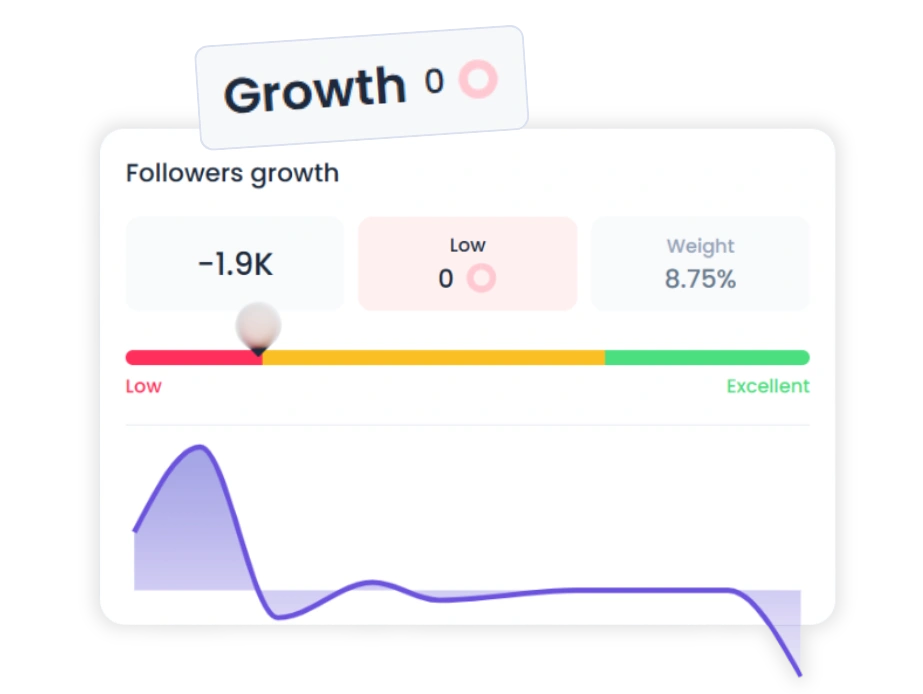
Inconsistências na proporção de engajamento em relação a seguidores: Se um influenciador tiver 100 mil seguidores mas consistentemente recebe apenas 50-100 curtidas por postagem, isso sugere uma parcela significativa de seu público pode ser inativo ou falso.
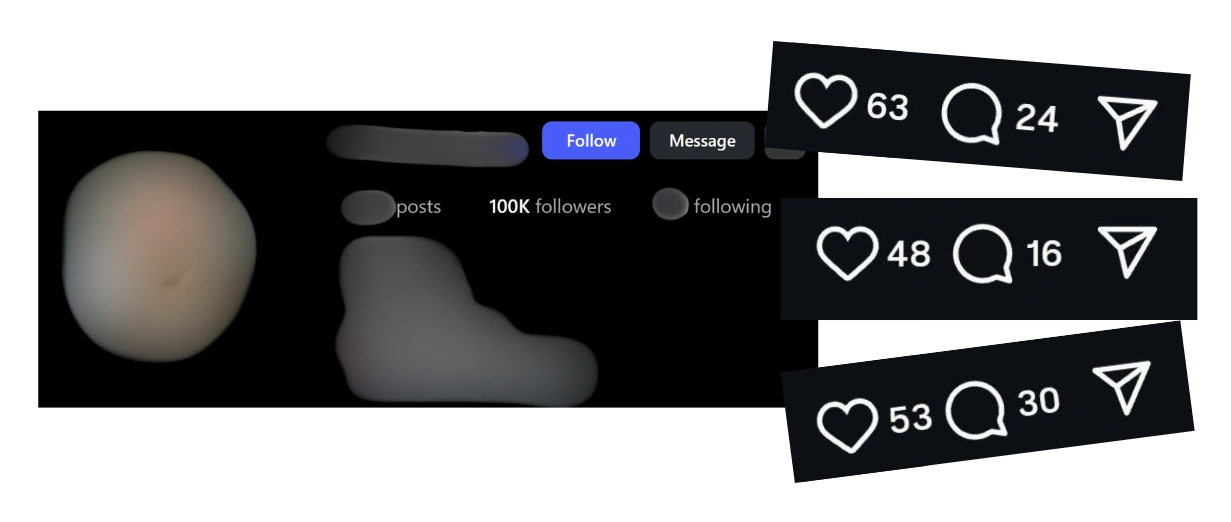
Padrões genéricos de comentários: Desconfie de comentários repetitivos e genéricos isso poderia indicar atividade de bot. O engajamento autêntico mostra variedade em idioma, tom e relevância do conteúdo.

Ferramentas para verificação de autenticidade
Várias plataformas podem ajudar você a avaliar a autenticidade dos seguidores:
- Ferramentas de análise de público da Favikon forneça métricas de autenticidade detalhadas e informações demográficas
- HypeAuditor fornece pontuações detalhadas de qualidade do público
- Modash oferece detecção abrangente de seguidores falsos
Aproveitando plataformas avançadas de análise
Análise abrangente do público
As plataformas modernas de marketing de influenciadores oferecem recursos sofisticados de análise de público. Índice de qualidade do público da Influencity integra vários fatores, incluindo padrões de engajamento, níveis de atividade do seguidor e autenticidade da interação para fornecer uma classificação de qualidade consolidada.
Essas plataformas normalmente analisam:
- Padrões de crescimento de seguidores ao longo do tempo
- Consistência de engajamento em diferentes tipos de conteúdo
- O público se sobrepõe aos concorrentes
- Sinais de afinidade com a marca e intenção de compra
Consistência entre plataformas
Influenciadores de qualidade mantêm características de público consistentes em todas as plataformas. Use ferramentas como SORRISO para analisar a presença em várias plataformas e garantir que a qualidade do público permaneça alta em todos os canais.
Conduzindo pesquisas diretas de audiência
Pesquisas e enquetes
Não negligencie pesquisa direta de audiência. Incentive potenciais parceiros influenciadores a realizar enquetes ou pesquisas com seu público sobre tópicos relevantes para sua marca. Isso fornece informações em primeira mão sobre:
- Comportamentos e preferências de compra
- Consciência e percepção da marca
- Detalhes demográficos não capturados pela análise da plataforma
- Engajamento com produtos ou serviços similares
Análise de desempenho de conteúdo
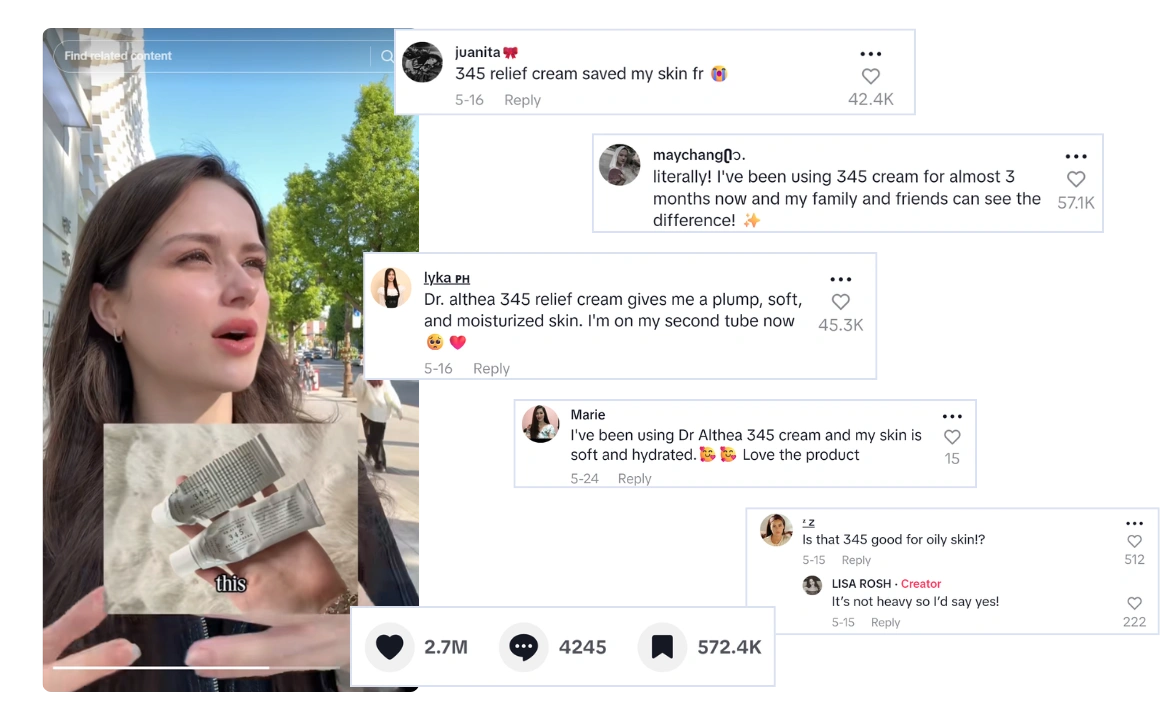
Analisar como o público do influenciador responde para diferentes tipos de conteúdo, especialmente aqueles semelhante ao que você gostaria que eles criassem para sua marca. Procure por:
- Maior engajamento em conteúdo relacionado ao produto
- Sentimento positivo nos comentários sobre colaborações de marca
- Perguntas sobre produtos ou serviços mencionados
- Conteúdo gerado pelo usuário inspirado nas postagens do influenciador
Tomando decisões baseadas em dados
Criação de um indicador de qualidade de público
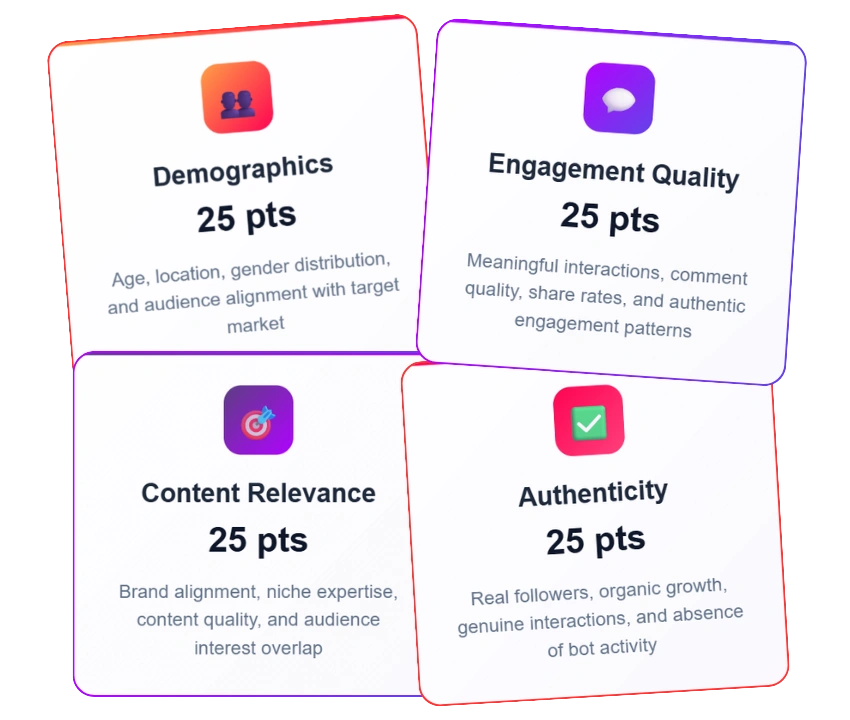

Desenvolva um scorecard padronizado para avaliar potenciais parceiros influenciadores de forma consistente. Inclua métricas como:
- Pontuação de alinhamento demográfico (0-25 pontos)
- Taxa de engajamento e qualidade (0-25 pontos)
- Indicadores de autenticidade (0-25 pontos)
- Relevância e desempenho do conteúdo (0 a 25 pontos)
Essa abordagem sistemática garante uma tomada de decisão objetiva e ajuda você a comparar os influenciadores de forma justa.
Previsão e rastreamento de ROI
Uso dados de qualidade do público para prever o desempenho da campanha. De acordo com uma pesquisa realizada por Mix de mídia, marcas que avaliam minuciosamente a qualidade do público antes que as campanhas vejam ROI 4,2x maior em comparação com aqueles que não o fazem.
Simplificando seu processo de avaliação com o Favikon
Embora a análise manual do público forneça informações valiosas, ela pode ser demorada e complexa. Plataforma abrangente de análise de influenciadores da Favikon simplifica esse processo fornecendo:
- Pontuação automatizada de qualidade do público em várias plataformas
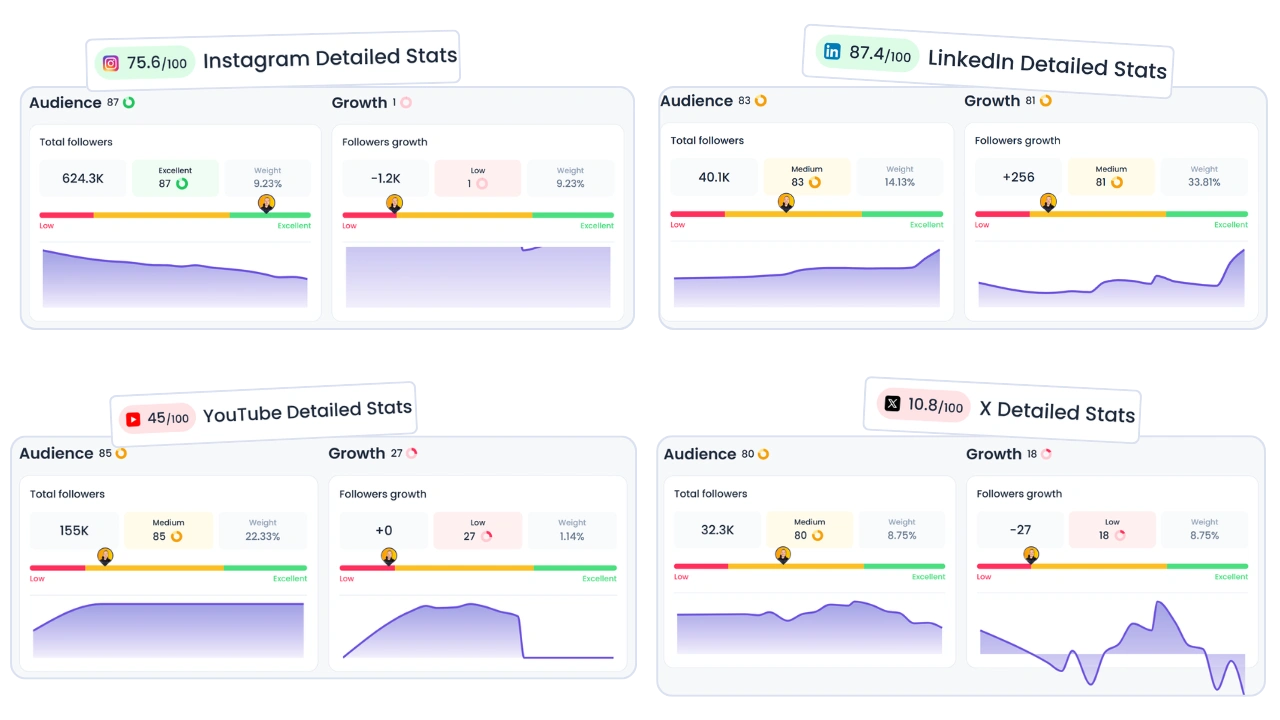
- Em tempo real detecção de autenticidade e identificação falsa de seguidores
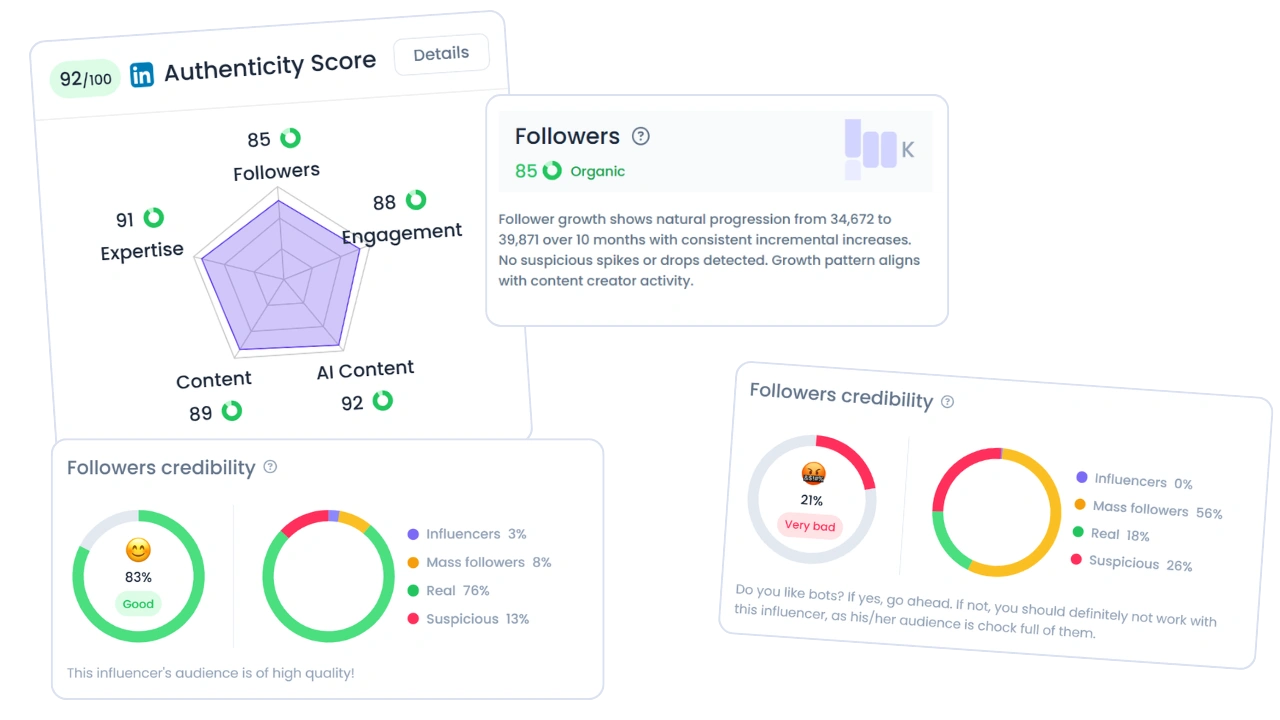
- Detalhado demográfico e análise psicográfica
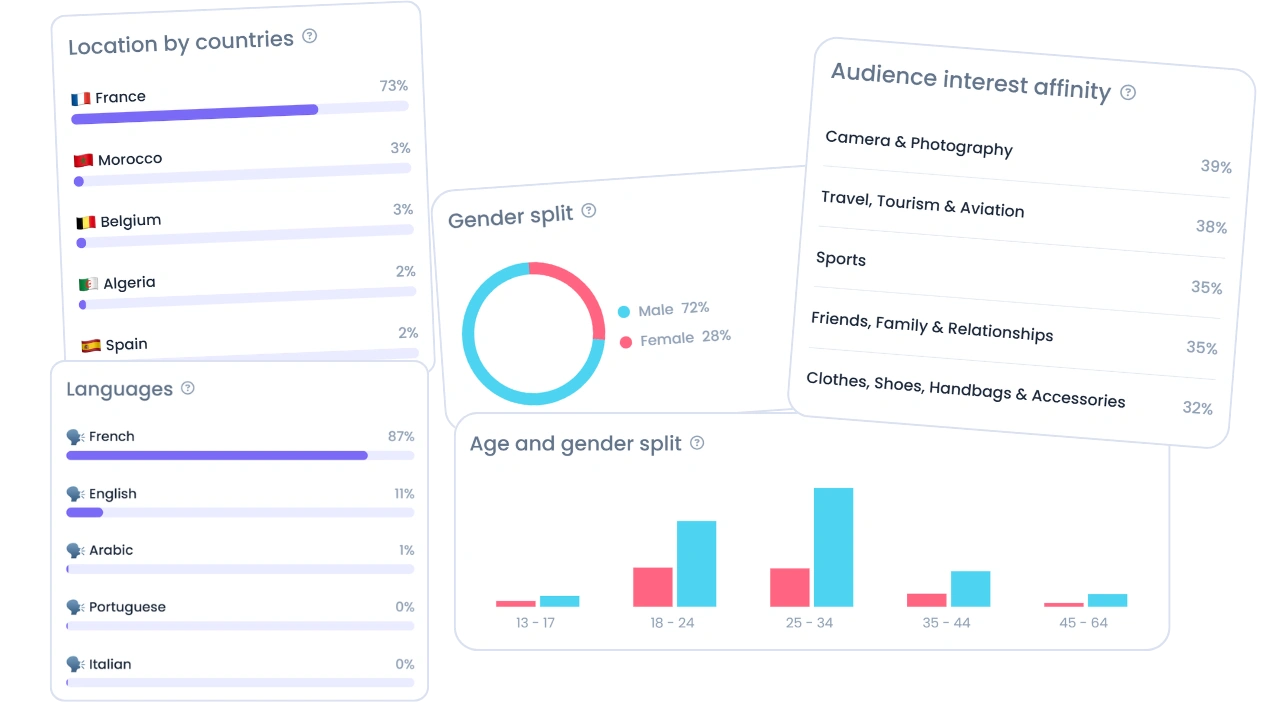
- Avaliação comparativa competitiva e insights do setor
- Modelos de previsão de ROI com base em métricas de qualidade do público
Ao alavancar Análise avançada do Favikon, você pode tomar decisões confiantes de seleção de influenciadores em minutos, em vez de horas, garantindo que cada campanha alcance públicos engajados e de alta qualidade aquele drive resultados comerciais reais.
Principais conclusões para o sucesso
Avaliando a qualidade do público influenciador requer uma abordagem multifacetada combinando métricas quantitativas com análise qualitativa. Concentre-se em alinhamento demográfico, autenticidade do engajamento, e padrões de comportamento do público de longo prazo em vez de métricas de vaidade sozinho.
Lembre-se disso qualidade do público diretamente se correlaciona com o sucesso da campanha. Investir tempo em uma avaliação antecipada completa economiza orçamento e oferece melhores resultados do que se apressar em parcerias com base apenas na contagem de seguidores.
O cenário do marketing de influenciadores continua evoluindo, mas uma constante permanece: públicos de qualidade geram resultados de qualidade. Ao implementar essas estratégias de avaliação, você criará mais parcerias eficazes com influenciadores que entregam impacto comercial mensurável.
Veja também 👀
🏆 COMO DESENVOLVER UM RESUMO PARA INFLUENCIADORES QUE OBTENHA RESULTADOS
LANCE E GERENCIE CAMPANHAS DE INFLUENCIADORES COM FACILIDADE
COMO O FAVIKON CLASSIFICA OS INFLUENCIADORES?
Related Articles
See all the articles










.png)





.png)
